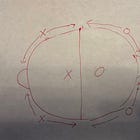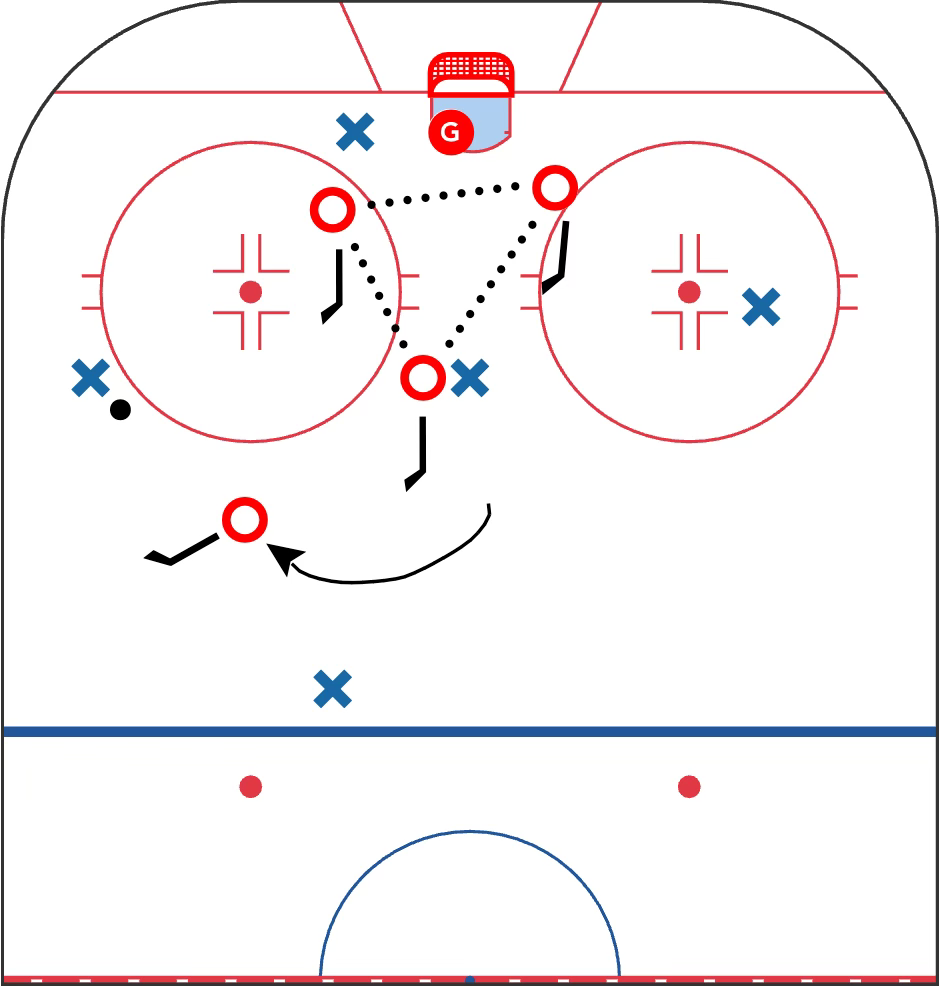From Chaos to a Passive Diamond: How Todd McLellan is changing the Red Wings' Penalty Kill
Let's look at the most notable tactical change thus far for the Red Wings.
It was an early defining moment of the Todd McLellan era for the Detroit Red Wings.
Leading 4-3 against the Columbus Blue Jackets, Detroit allowed a game-tying goal to James van Riemsdyk with 2:41 remaining in the third period. There was some contact in the crease with Red Wings goalie Cam Talbot, so McLellan elected to challenge the goal and lost.
It put Detroit on the penalty kill for the second time, and frankly, felt like a major misstep by the coach in a vacuum. It was an unlikely challenge, and with Detroit’s penalty killing history, a power play against could have given Columbus the game.
Instead Detroit killed the penalty and the timing worked perfectly where Ben Chiarot’s blocked shot led to a leaping breakout pass from Tyler Motte to Jonatan Berggren for the game-winning goal on a breakaway as he left the penalty box.
Fun, dramatic stuff.
It also encapsulates a couple things that McLellan has brought to the Red Wings since he was hired on Boxing Day.
While the challenge wasn’t a good one in a vacuum, it was risky and McLellan didn’t really care. Since he’s come to Detroit his main focus has been pushing the Red Wings out of their comfort zone, driving them away from the safe robotic feel of the team, and trying to add a little bit more fun and chaos.
Sometimes that can be adding a new drill, sometimes it can be telling players to “play fucking hockey,” in practice, and other times it can be having the chutzpah to challenge a questionable goal.
It’s also important to note that the challenge was a vote of confidence in the Red Wings penalty kill, which was one of the worst in the league before the coaching change and one of the worst in NHL history.
As my pal Prashanth Iyer observed in his early December review of the Red Wings penalty kill, it was a calamity of errors.
One of the main focuses of Prashanth’s examination was what happens with the in-zone coverage.
Following a lost faceoff, the Wings have to revert to their PK system which appears to prioritize three things:
Take away goal line plays
Negate the high slot one-timer and cross-slot one-timer
Pressure the point
What you’ll notice is when the puck rotates up to the point, the Wings take on a “1-1-2” formation where F1 pressures the point, F2 sticks with the man in the slot and is prepared to switch roles with F1 as needed to apply point pressure. The two defensemen are positioned inside the faceoff dots and are responsible for monitoring the netfront player as well as jumping out to get in shooting lanes if the puck is rotated to the halfboards.
You should read Prashanth’s piece in full right here if you want a full breakdown, it’s a must-read in my view:
Prashanth’s observations also lineup with what Red Wings players have told me and align with the changes McLellan and his top assistant Trent Yawney have made since they took over, in fact the most notable “tactical” thing McLellan has done with the group according to players is re-work the penalty kill more to his liking.
The Red Wings were using a wedge plus-1 penalty kill, which is a more traditional approach and relies more on one base shape, the three-man wedge, and one chaser pursuing the puck.
Here’s a good visual breakdown of the wedge plus-1 from The Coaches Site, and you can read their in-depth breakdown here.
It’s a penalty kill formation that works at times, but can be really taxing on the player at the top and leads to a ton of chasing.
It’s easy to take pot shots at the old system once it’s been discarded, but multiple Red Wings told me in the past week that the old in-zone killing system was exhausting and frustrating for players. One Red Wings penalty killer told me it felt a bit juvenile and put Detroit in a spot where NHL-level players could simply expose Detroit.
Again, I don’t like taking pot shots as someone is out the door, but that’s what players told when breaking down the changes on the PK.
So McLellan and Yawney came in and installed a passive diamond on the penalty kill, which looks just like it sounds, it’s a diamond that really doesn’t move too much.
In the version of the diamond the Red Wings are playing, each player is responsible for their quadrant, and one player said the coaching staff had explained it like rubber bands that give-and-take — players stretch into ares of their quadrant to defend, but always elastic back.
Here’s a poorly hand-drawn graphic of the tactic as explained to me by a couple Red Wings penalty killers.
The net-front player has that circle zone, the net-front, while the others push into their respective spaces to pressure, but always collapse back to the middle to help with the middle of the ice puck retrievals.
Let’s puts some video to that, and watch the last eight seconds of the penalty kill from last night that led to the game-winning goal.
Now the Red Wings penalty kill is far from perfect, in fact in the past three games —I’m not counting Game 1 where McLellan effectively let things ride from Lalonde’s system — Detroit has allowed two power play goals against on eight penalty kills, a success a 75 percent success rate.
But it is at least trending in a better direction, and multiple Detroit players said they expect it to get better with familiarity. One player, for example, told me that in the game against Pittsburgh on New Years Eve they got caught out of position on a play because of trying to play more of the wedge plus-1 out of habit. Most notable to me, that same player said they had a good teaching conversation with Yawney the next day about it and there was understanding re-programming a players habits isn’t like flipping a switch.
So it’s something to watch going forward with Detroit and a bit of a case study for other tactical things McLellan eventually tries to tackle.







It just so happens that I picked last night’s game to check Nationwide Arena off my list of NHL arenas where I’ve seen a game. I haven’t watched nearly as many Red Wings games to know what things like under Lalonde but I did notice how well they kept Columbus from any sustained attack especially after the early power play goal against. And that was definitely a thrilling finish. It was good to learn about some of the tactical aspects that escaped my attention as a casual viewer that never played the game